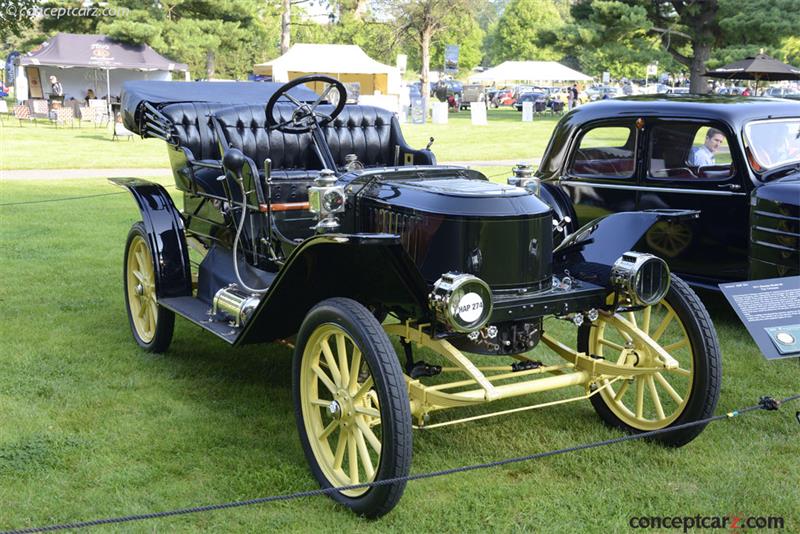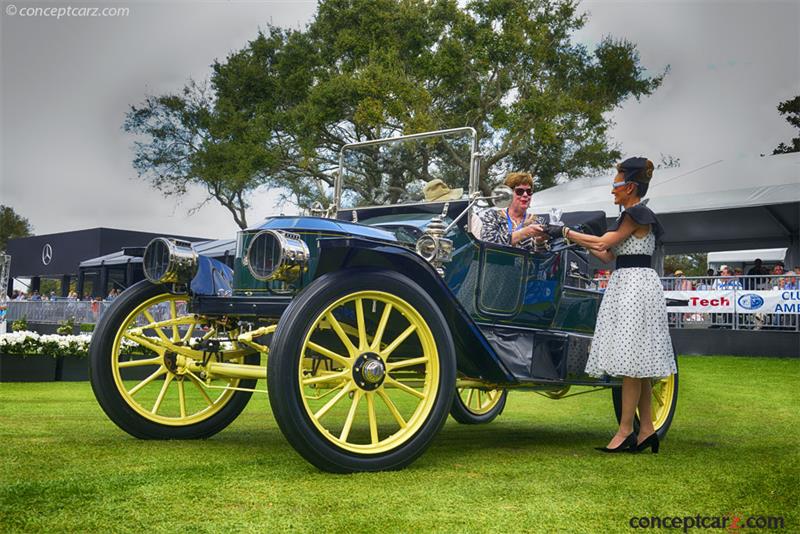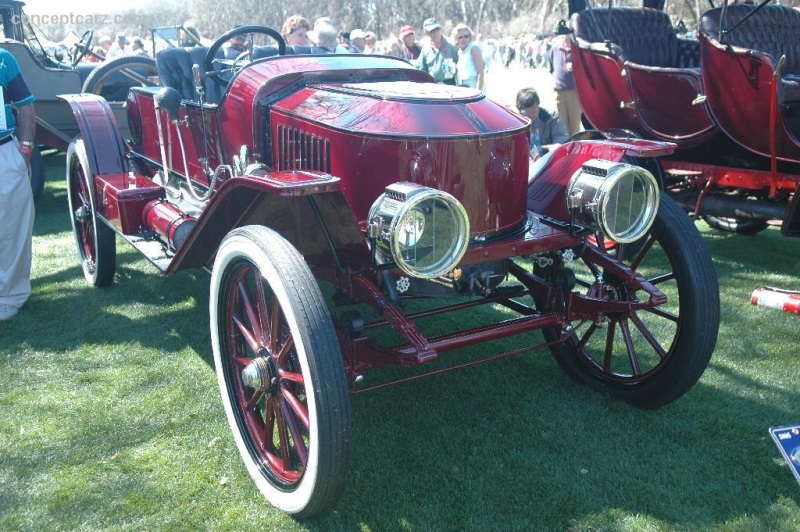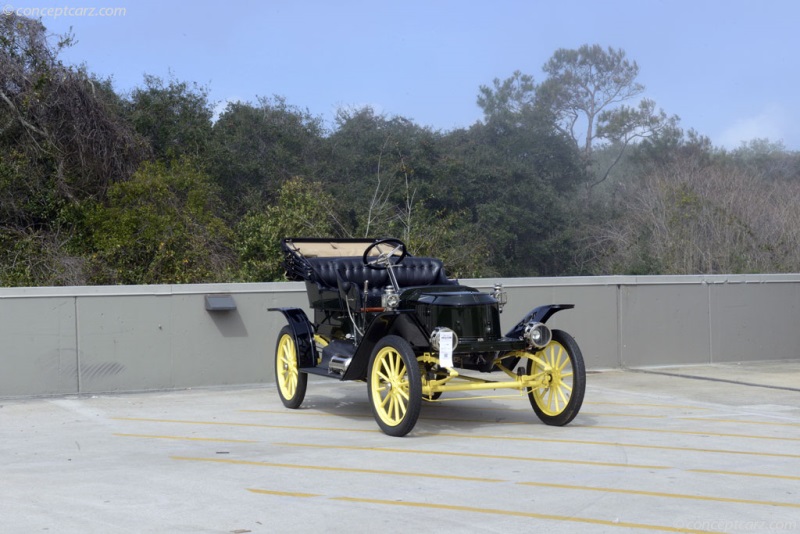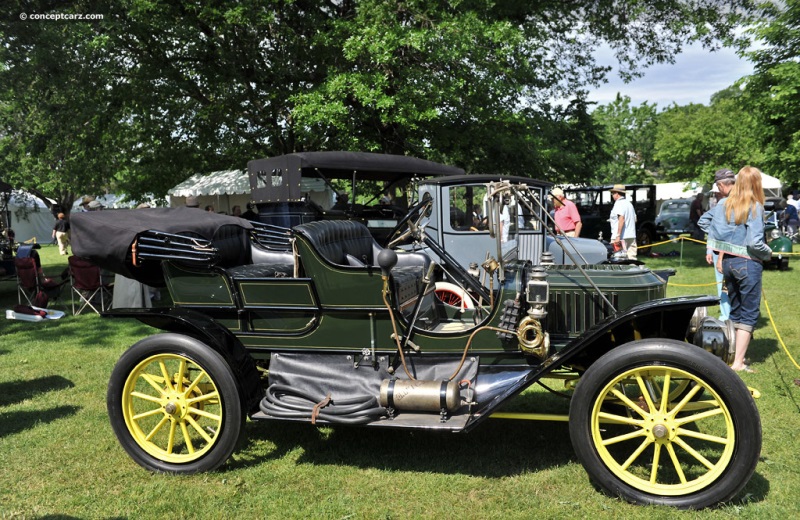1911 Stanley Steamer Navigation
The Stanley Motor Carriage Company was founded by ingenious identical twin brothers Francis E. and Freelan O. Stanley from Kingfield, Maine, who had amassed a fortune after selling their photographic dry plate business to Eastman Kodak. The first Stanley-built vehicle appeared in 1897, and over the next year, they built several more in their dry plate factory at Newton, Massachusetts. In November of 1898, they entered one of their steam-powered cars in a 'motor carriage contest' at Charles River Park, a bicycle racing track, in nearby Cambridge. Twelve other vehicles, using steam, gasoline, and electric, competed, but it was the Stanleys' car that won the hill-climb competition, and circling the oval track, it covered a mile in two minutes, 11 seconds, by the Stanleys' account setting a world record. 
Toy Tonneau
Chassis #: 6069
View info and history
Auction entries : 1One of the earliest proofs that 'win on Sunday, sell on Monday' was true, the brothers had reportedly received orders for 200 cars within two weeks of their victory, prompting them to enter production. The Stanleys were soon visited by John Brisben Walker who informed the brothers that, 'I have come to buy a half interest in your automobile business.' Instead, the brothers quoted an astronomical price of $250,000 for the whole business, and to their surprise, Walker, publisher of The Cosmopolitan magazine, accepted the deal. With the backing of Amzi Lorenzo Barber, 'The Asphalt King' who had made millions paving the nation's cities, Walker took over the Stanleys' business, engaging the twins to act as 'general managers.' The Stanley-built car became the Locomobile, and for a time, it was the best-selling car in America. The euphoria, however, was short-lived, as Walker and Barber soon took to quarreling, and the Stanelys discovered they did not like working for others. They had signed an agreement to refrain from the manufacture of their own steam cars for a one-year period, and while they waited, they designed a car far superior vehicle to any of their preceding models. It abandoned the Locomobile pattern of a transverse front spring and instead used full-elliptic springs, oriented longitudinally on all four corners. The wheelbase was larger, and now measured 70 inches, and the addition of a front seat allowed for two more passengers. The toe-board where their feet rested doubled as a toolbox cover when closed. During this early pioneering period of motoring, battery electrics, and petrol-powered cars were popular alternatives to steam-powered cars, and each had advantages and disadvantages. The battery electrics had advantages as a short-range town carriage and even shorter-range speed record breakers. The steam engines were quiet, clean, and developed maximum torque at minimum revolutions, which meant they did not require the noisy gear change systems vital with a petrol engine. The steam engine was typically geared directly to the rear axle, which negated a clutch or variable speed transmission. Another benefit of the steam power was that it did not require a carburetor and an ignition system, both of which were unreliable. Additionally, there were more mechanics and engineers who understood steam power at the time, than those who understood petrol engines. The Stanley automobiles progressed to a non-condensing engine driving the rear axle directly, with a rear-mounted boiler. By 1903, Locomobile was producing petrol-engined cars and Mobile had gone out of business, leaving Stanley to dominate the steam-car market, which they did until 1927, when steamer production ceased. During their early years, they outsold all gasoline-powered cars and were second only to the electric cars of the Columbia Automobile Company in the United States. 
Toy Tonneau
Chassis #: 6069
View info and history
Auction entries : 1The bodies of the 1903 Stanley Steamers wore a new design, and the 1904 cars were the first Stanleys to use model names. The 2-cylinder Double-Act Steam Engine with approximately 10 horsepower was joined by a 20 horsepower model in 1905. By 1906, the Stanleys were offering a 100-inch wheelbase model, which allowed for more coachwork capacity, and the boiler enlarged to 23 inches. In 1906, a Stanley car set a land speed record of 127 miles per hour, and the following year at Daytona Beach, a Stanley nearly achieved 150 miles per hour. The vehicles of the Stanley Motor Carriage Company generated steam in a forward fire-tube vertical boiler, with the primary fuel being kerosene. The 2-cylinder engine operated steam pressure at around 450 pounds. The Model 63 had a water reservoir of about thirty gallons and a fuel tank of 18 gallons. If completely full, and liquid weighs 8 pounds per gallon, this would add 384 pounds of additional weight to the vehicle. Ultimately, the Model 63 averaged about 1 mile per gallon and had a comfortable cruising speed of 25-30 mph, and could easily achieve 45 mph.The 1911 Stanley Steamer
Six models were listed in the Stanley catalog for 1911 including two on a 104-inch wheelbase platform, three measuring 115 inches, and the Model 86 Mountain Wagon with seating for nine individuals on a large 120-inch wheelbase. The Model 62 was a runabout, and the Model 63 was a Toy Tonneau, both powered by a 10-horsepower steam engine and resting on the short, 104-inch wheelbase. The Model 70 was a touring body style, the Model 71 a toy tonneau, and the Model 72 a roadster - all equipped with a 20-horsepower boiler and a 115-inch wheelbase. The Model 86 was powered by a 30 hp steam engine.
Toy Tonneau
Chassis #: 6076
Engine #: 6-685
View info and history
Auction entries : 2The 1911 Stanleys had a solid front axle, a live rear axle, full-elliptic leaf springs, two-wheel mechanical drum brakes, and a chain-driven rear differential. Approximately 535 Stanley vehicles were built in 1911.
by Daniel Vaughan | Aug 2019
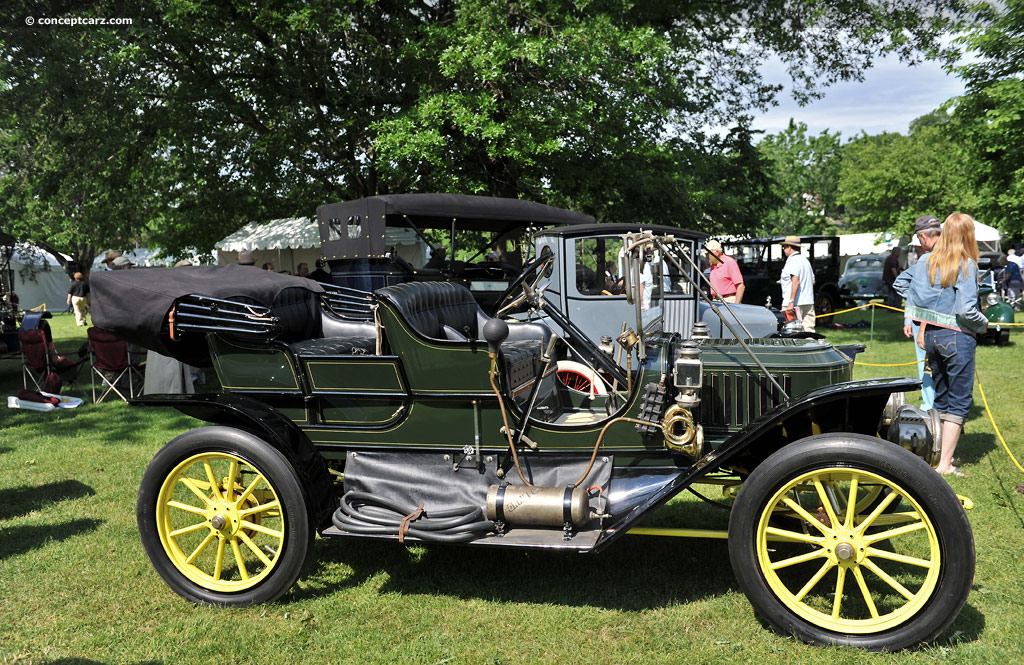
Toy Tonneau
Chassis #: 6069
View info and history
Auction entries : 1
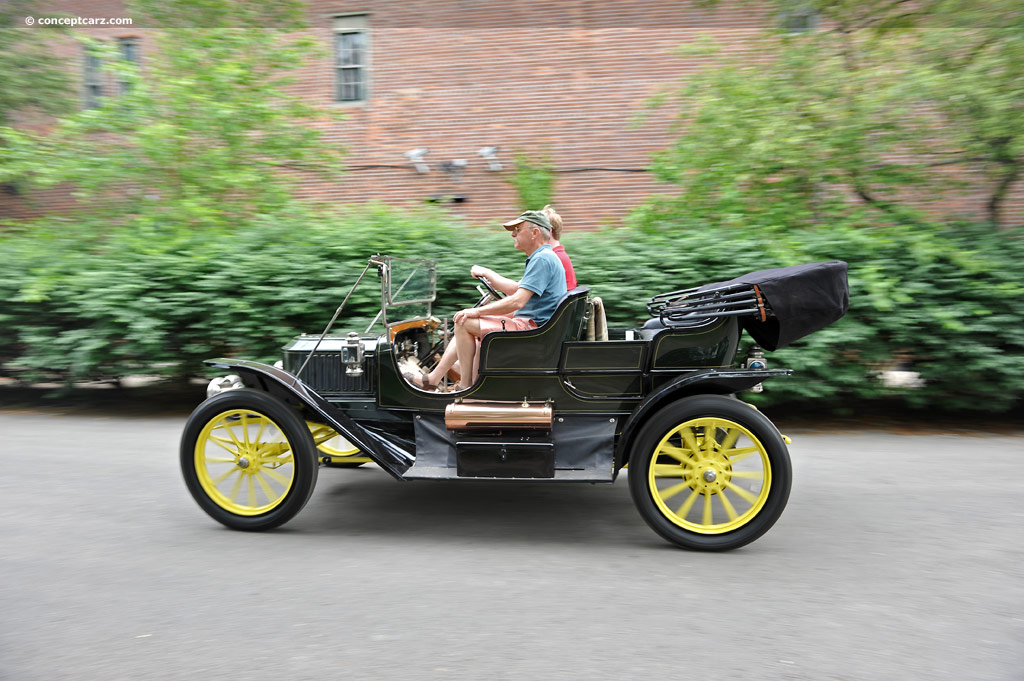
Toy Tonneau
Chassis #: 6069
View info and history
Auction entries : 1
Six models were listed in the Stanley catalog for 1911 including two on a 104-inch wheelbase platform, three measuring 115 inches, and the Model 86 Mountain Wagon with seating for nine individuals on a large 120-inch wheelbase. The Model 62 was a runabout, and the Model 63 was a Toy Tonneau, both powered by a 10-horsepower steam engine and resting on the short, 104-inch wheelbase. The Model 70 was a touring body style, the Model 71 a toy tonneau, and the Model 72 a roadster - all equipped with a 20-horsepower boiler and a 115-inch wheelbase. The Model 86 was powered by a 30 hp steam engine.
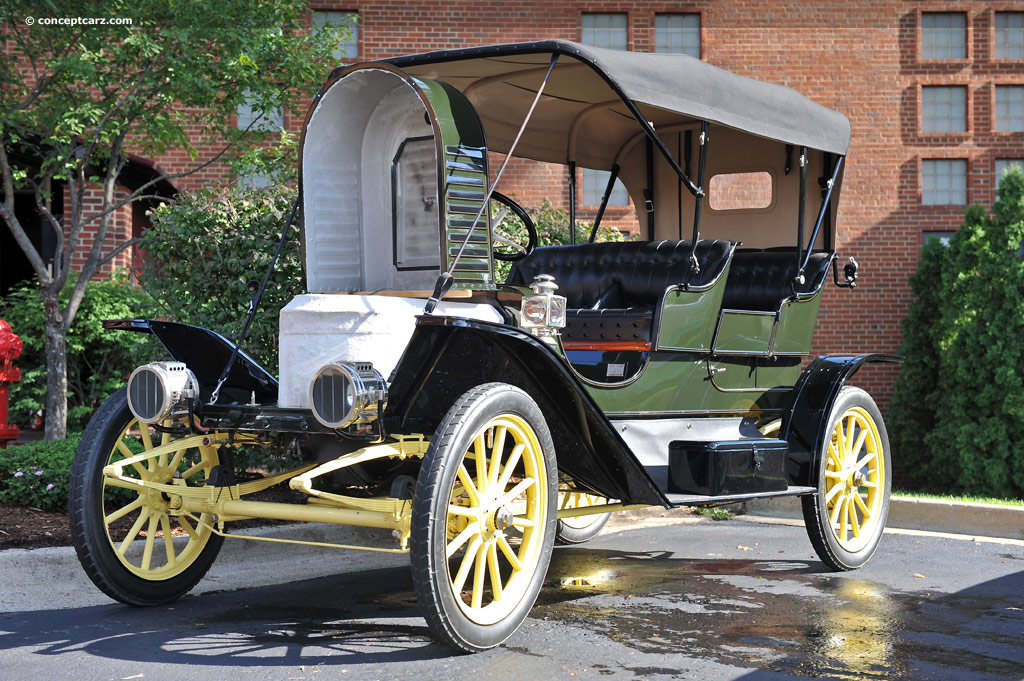
Toy Tonneau
Chassis #: 6076
Engine #: 6-685
View info and history
Auction entries : 2
by Daniel Vaughan | Aug 2019
- 1911 Stanley Steamer Menu
- Article
- Image gallery
- Valuation
- Specifications
- Production figures
Stanley
Similar Automakers
Similarly Priced Vehicles
1911 Stanley Steamer Vehicle Profiles
Recent Vehicle Additions
Performance and Specification Comparison
Price Comparison
Related Automotive News

The Undying Charm Of Classic Cars: RM Sotheby's Sells 96% Of All Lots In Hershey, A Near White-Glove Sale
Sales totaled %2410,675,350 with an incredible sell-through rate of 96.33 over the two-day sale
Bidding participation was robust with 548 registered bidders. Notably, 20 were first-time participants, representing 17 countries and 39 states...
Victory For Veteran Motor Cars At Bonhams London To Brighton Sale
It was full steam ahead for Bonhams London to Brighton Sale today, 3 November, with an astonishing 91 of the magnificent veteran motor cars, quads and tricycles selling by value.
The highlight of the sale was the 1903 Panhard et Levassor Model B 10hp...

FORD DONATED 'OLE YELLER' MUSTANG RAISES $295,000 TO SUPPORT EAA YOUTH EDUCATION AND AVIATION
Ford Ole Yeller Mustang bred from Shelby GT350® – the most track-ready and road-legal Mustang ever produced -- sold at charity auction July 28 at EAA AirVenture in Oshkosh, Wisconsin
Donation and sale benefits EAAs youth education programs, incl...

FULL STEAM AHEAD FOR HISTORICS
Stanley Steamer takes centre stage for spring sale
Brooklands will provide the backdrop for the ultimate MPV – built long before the category was even invented – when a 1917 20hp Stanley Mountain Wagon crosses the block on Saturday March 9t...

Red Bull Racing: 2012 Formula One World Champions
Fourth Team in History to Achieve Three Consecutive Titles Team Takes its Third World Title in Eight Years
Car 1 SEBASTIAN VETTEL, Finish Position 2nd, Start Position 1st
Im very, very happy for the team to win a third Constructors....































